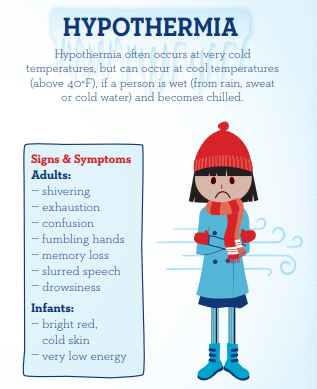
Image from CDC Info-graphic
With much of Northwest Indiana experiencing record-setting cold temperatures this week, it is vital for people to take necessary precautions to avoid getting hypothermia or frostbite.
Currently, individuals are advised to remain indoors unless it is absolutely necessary to venture out into the elements.
If you must go out for any amount of time, make sure you’re sufficiently dressed for the weather.
According to the Center for Disease Control, your fingers, toes, ears, cheeks, chin

The CDC reports that the first sign of frostbite is redness or pain in a particular skin area.
However, many frostbite victims are often unaware of the severity of their condition due to the frozen tissue feeling numb.
Additional signs include skin that feels unusually waxy or firm and skin turning a white or grayish-yellow color.
Meanwhile, adults who are shivering and show signs of slurred speech, memory loss, drowsiness and fumbling hands would be exhibiting symptoms of hypothermia. Symptoms of hypothermia for babies include bright, red cold skin and very low energy.
If a person’s temperature dips below 95 degrees, immediately seek medical attention. In the meanwhile, frostbite and hypothermia victims should be taken to a warm area. Remove any wet clothing and warm them under dry layers of blankets and clothing.

Avoid walking on feet or toes with frostbite and do not rub or massage affected areas. Additionally and never attempt to treat it with a heating pad, electric blanket, radiator, fireplace or heat lamp. Instead, place areas affected by frostbite in warm-to-touch water.
Certain people can be more prone to these two winter afflictions such as elderly adults without proper food, clothing or heating and babies sleeping in cold rooms. Those who stay outdoors for long periods of time such as hikers, hunters and homeless individuals also run a higher risk.
Click the following link in order to view the full CDC info-graphic about hypothermia and frostbite.






















